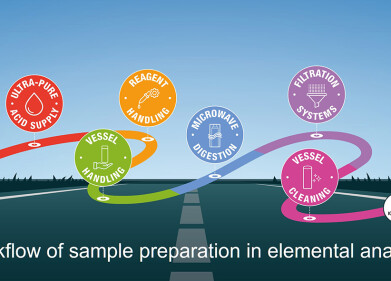Environmental Laboratory
Can Carbon Capture Technologies Limit Global Warming?
Jan 17 2016
In light of the Paris climate change agreement talks last month in December, countries around the world are looking at ways to decrease their carbon footprint and reduce the number of harmful emissions they release into the atmosphere. But what about extracting some of the pollutants already present in the air?
Carbon capture and storage (CSS) technologies have long been used in industry, though never as a means of reducing greenhouse gases (GHGs). This is despite the fact that leading scientists have been pushing the techniques as a means to curbing global warming for years. But can it really help?
The Advantages of CCS
CCS is an attractive idea because of the fact that it already exists as a workable technology. In an age when many quarters (such as Australia) are calling for innovation and the advancement of technology as the only practical solution to climate change – man’s only hope, as it were – the existence of a ready-to-go technology which can actively reduce the amount of carbon in our atmosphere should not be ignored.
It also offers the possibility of undoing some of the damage we have already wreaked on our planet. Hans Joachim Schellnhuber, advisor to the Pope on matters of climate change, championed the technology as providing one feasible remedy.
“One thing is clear is that in order to even aspire to 1.5°C you need not only rapid decarbonisation of the global economy by the middle of century, but you probably have to remove some carbon from the atmosphere, in particular afforestation on degraded lands, which is a win/win option anyway,” he told the Guardian.
The Disadvantages of CCS
However, Schellnhuber was quick to point out that CCS does not represent a magical panacea to the issue. “I would warn you against the illusion you can just extract huge amounts of carbon from the air in order to restore the atmosphere,” he said, stressing the need for a coordinated effort to reduce the amount of carbon already in our atmosphere and simultaneously dramatically curbing the amounts we continue to emit.
Furthermore, although CCS is a workable technology, much is still unknown about it. As aforementioned, it has never been used on such a grand scale to tackle climate change, and as such, there is the potential that the process could have damaging effects on the emissions of other GHGs and harmful contaminants. Therefore, equipment such as FTIR gas analysers are crucial in the continued research into this burgeoning technology.
A further stumbling block to realising this research is the cost involved. The Conservatives recently scrapped a £1 billion CCS grant, just six months before the four-year competition was due to expire. The decision to back out of this potentially planet-saving technology has come under heavy criticism from environmentalists and opponents of the incumbent.
Clearly, CCS represents one viable method of tackling climate change. However, it cannot be pursued alone and it cannot be pursued half-heartedly. If we wish to save our atmosphere, we must put the time, effort and resources into investing in this and similarly environmental schemes.
Digital Edition
AET 28.2 April/May 2024
May 2024
Business News - Teledyne Marine expands with the acquisition of Valeport - Signal partners with gas analysis experts in Korea Air Monitoring - Continuous Fine Particulate Emission Monitor...
View all digital editions
Events
Jul 10 2024 Birmingham, UK
Jul 21 2024 Cape Town, South Africa
Australasian Waste & Recycling Expo
Jul 24 2024 Sydney, Australia
Jul 30 2024 Jakarta, Indonesia
China Energy Summit & Exhibition
Jul 31 2024 Beijing, China


















